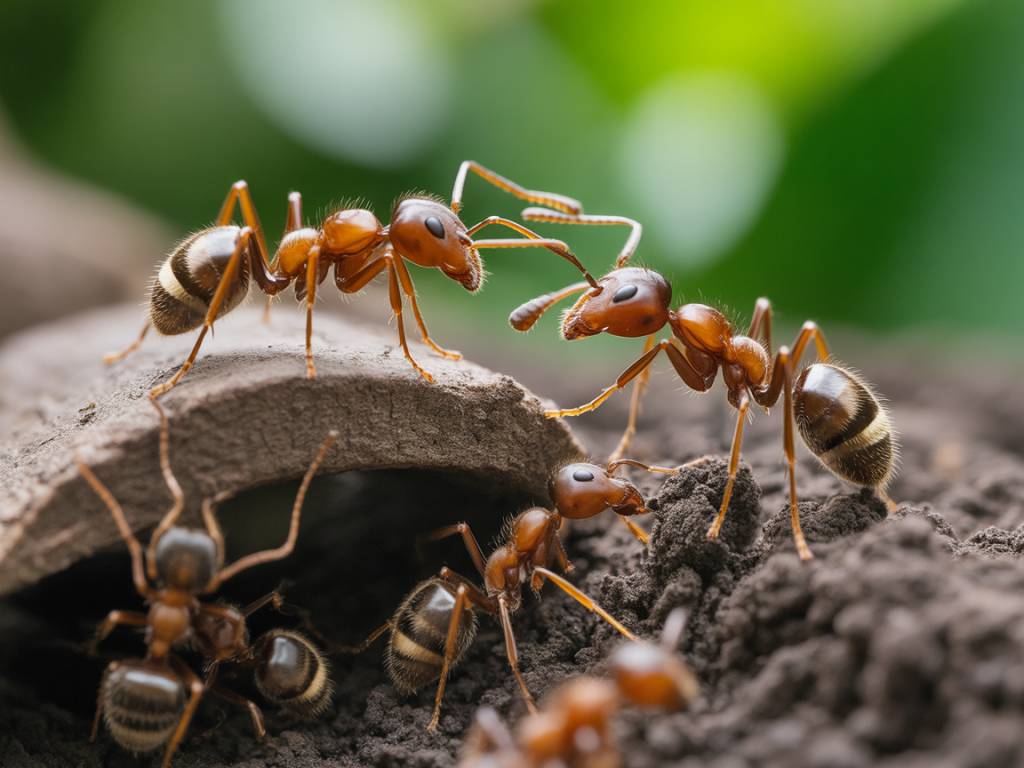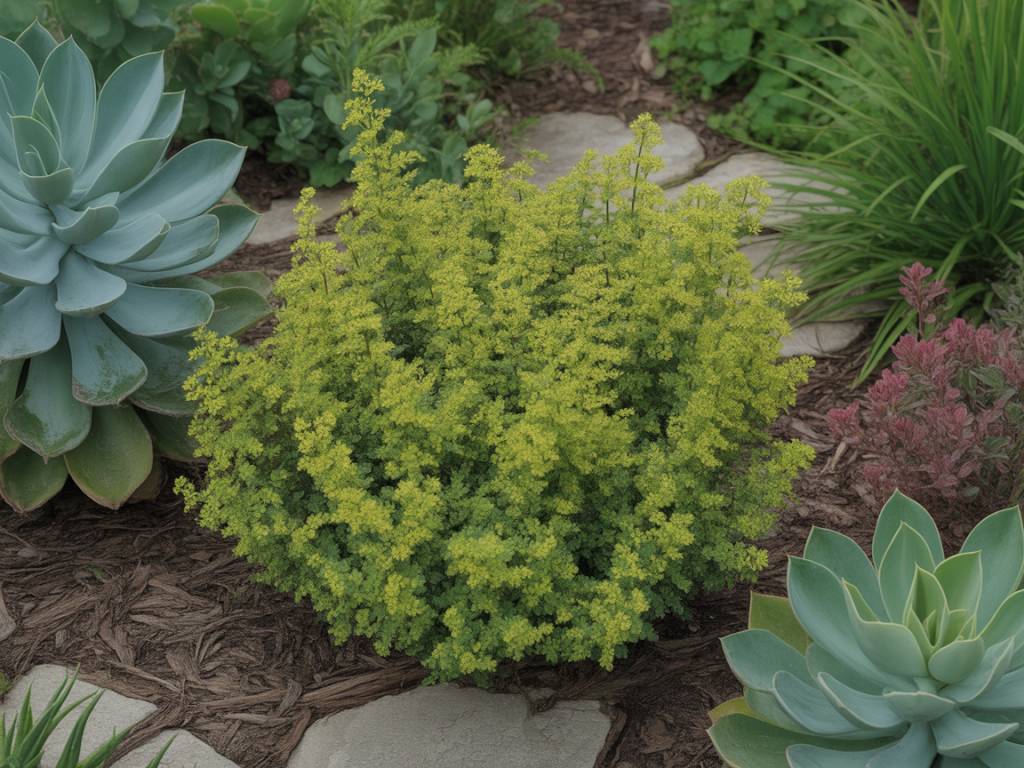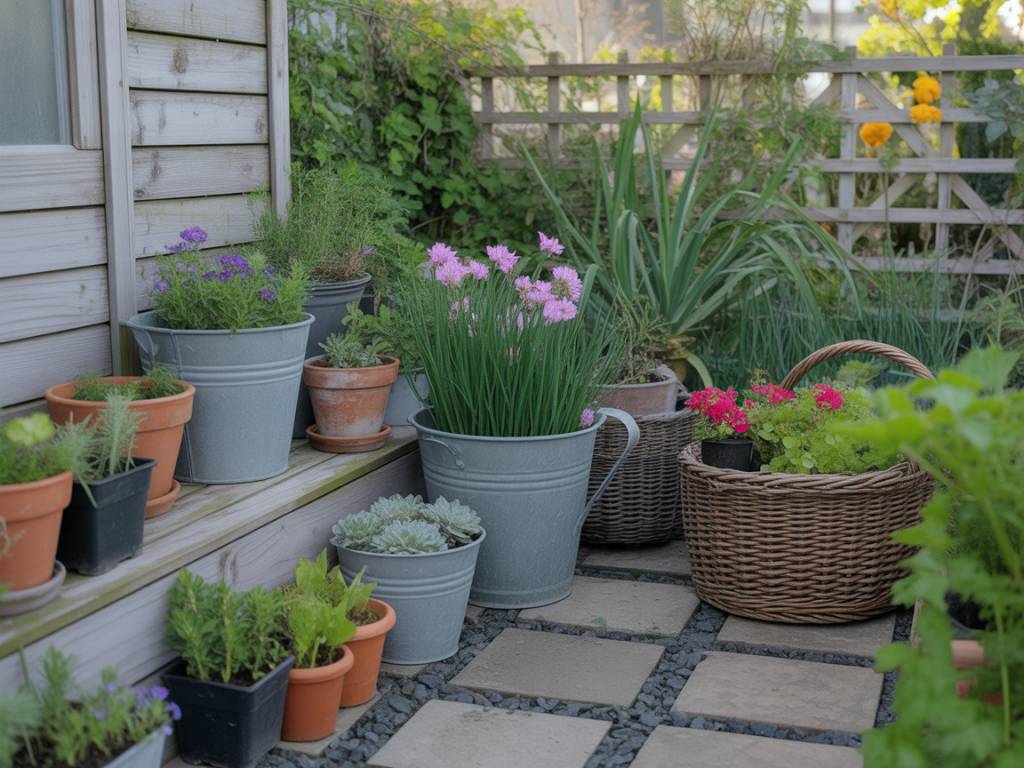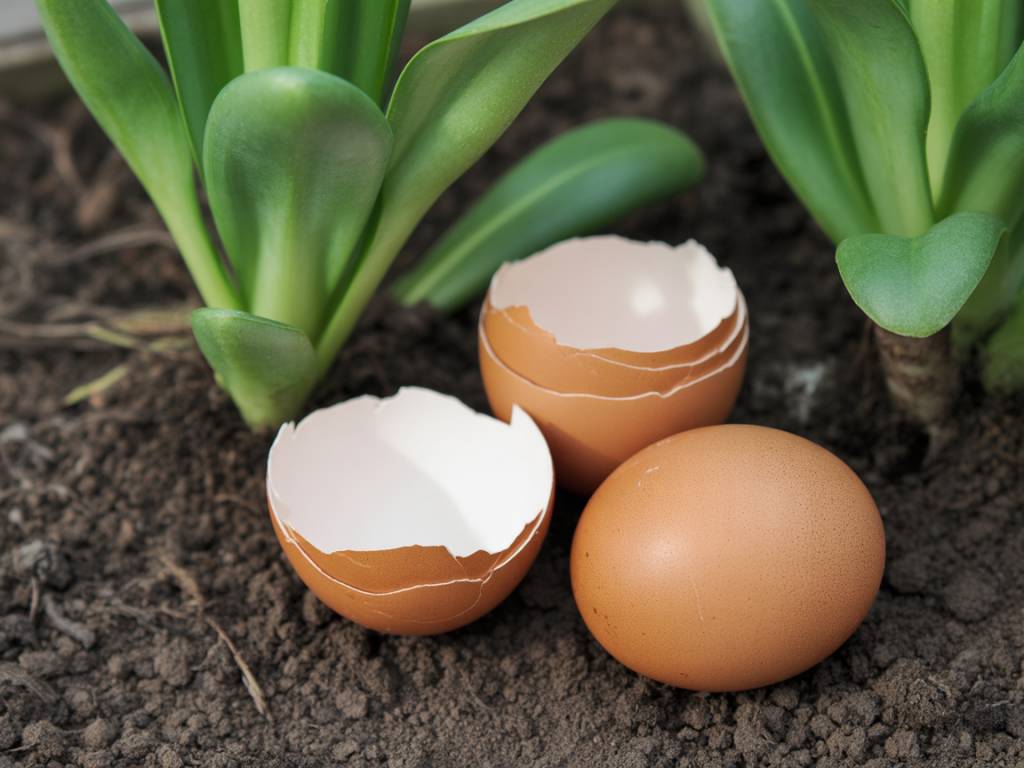Why ants appear in the kindest gardens
If you care about organic gardening and wildlife, sooner or later you notice the same small drama: a bustling ant colony right where you wanted to sow carrots or sit with your tea. Suddenly, the ground is moving.
Ants are not villains in the garden story. They aerate soil, recycle organic matter, and are an important food source for birds, hedgehogs, amphibians and many other creatures. Yet in some spots – under seed trays, inside a raised bed, at the foot of your prize peonies – they can cause very real trouble.
The real challenge is not “How do I get rid of ants?” but “How do I gently persuade this colony to move on, without breaking the wider web of life I’m trying to protect?”
Let’s walk through the options, step by step, from understanding what’s happening beneath your feet to using kind, organic methods that respect your garden as a living system.
When ants are a problem – and when they’re not
Before deciding to intervene, it helps to ask: are the ants truly causing damage, or are they simply visible?
Ants are usually not a problem when they are:
- Building small, scattered nests in lawn edges or wild corners
- Harvesting aphids from robust, mature shrubs and trees
- Running busy highways along paths and borders without damaging plants
Ants may be a real issue when:
- They are farming aphids on young, delicate plants (broad beans are a classic victim)
- They have built a large nest in the root zone of vegetables or flowers, drying the soil
- They are nesting in pots, seed trays, greenhouses or under paving you need to stabilise
- They are disturbing sowing beds so seeds dry out or seedlings topple
If you only feel “mildly annoyed”, gentle deterrence is usually enough. If plants are wilting or aphids are exploding in number, it may be time to encourage the colony to move elsewhere.
Understanding the colony: thinking like an ant
An ant colony is essentially one organism spread across many bodies. When we remember this, our approach softens. The aim isn’t to “kill pests”; it’s to nudge a super-organism to choose a new address.
Ants choose nest sites that are:
- Dry and well-drained
- Reasonably warm (especially sunny, south-facing spots)
- Protected from disturbance
- Close to food sources like aphids, nectar, seeds or kitchen crumbs
So the most organic way to relocate a colony is to change these conditions in the area where you don’t want them, while making other places more attractive.
Step one: reduce ant–aphid partnerships, gently
In many gardens, the main ant issue isn’t the ants themselves – it’s their protection of aphids, which they “milk” for honeydew. Break this partnership, and the colony often becomes less interested in the area.
Organic ways to reduce aphids without harming wildlife include:
- Water jet therapy: On a dry day, spray aphid-covered stems with a strong jet of water from the hose. This dislodges most aphids but leaves ladybirds and other predators time to recolonise.
- Finger-and-bucket method: For small infestations, run your fingers gently down the stem, squashing aphids into a bucket of soapy water. It’s not glamorous, but it’s very effective.
- Encourage natural predators: Plant umbellifers like fennel, dill and cow parsley to attract hoverflies, lacewings and parasitic wasps. Tiny though they are, they can clear astonishing numbers of aphids.
- Sacrificial plants: Let aphids feast on a few robust, non-critical plants (nasturtiums are ideal). Ants may focus their attention there instead of your vegetable patch.
As the easy honeydew supply declines, ants often reduce their activity on those particular plants and may gradually shift traffic elsewhere.
Step two: make the spot less inviting
Ants dislike frequent disturbance. They’ll also think twice about sites that are too damp or insufficiently sheltered. Adjusting the micro-habitat is one of the most wildlife-friendly strategies.
For nests in beds or at plant bases:
- Disturb the nest lightly but regularly: Once a day for a week, use a hand fork to gently loosen and turn the top 3–5 cm of soil above the nest. Don’t dig deeply into roots; the aim is to signal “this is not a safe place”.
- Add moisture thoughtfully: Water the area a little more often than usual, especially in very dry weather. Ants prefer dry sites; persistently damp soil encourages them to go elsewhere, but be careful not to waterlog plants that hate wet feet.
- Mulch strategically: A layer of well-rotted compost or leaf mould can cool and darken the surface. Ants sometimes move on if their warm, sun-baked nest is shaded and frequently disturbed.
For nests in pots or containers:
- Sink and soak: Place the entire pot in a large bucket or trug of water, just up to the rim, for 20–30 minutes. Ants dislike flooding and will usually carry their larvae out and relocate. Let the pot drain thoroughly afterwards.
- Repot with care: If the colony persists, gently slide the rootball out, tease away as many ants as you can over a patch of bare soil (where birds can feed), then replant in fresh compost. Avoid using chemical drenches; they affect much more than ants.
Like a neighbour who starts noisy DIY every morning at 7am, your repeated, gentle interventions will usually signal: “Time to find a quieter street.”
Step three: offer better alternatives nearby
In a wildlife-friendly garden, we don’t simply close doors; we open other ones. If you want a colony to move, it helps to provide more appealing real estate a little further away.
Ideal “alternative homes” for ants include:
- Deadwood piles: A small stack of logs or thick branches in a sunny, dry corner can be perfect. Ants love the crevices, and birds appreciate the buffet.
- Stone or brick piles: A modest pile of rubble or old bricks, again in a well-drained spot, warms quickly and stays dry inside.
- Dry, undisturbed edges: Allow a strip along a fence or hedge to remain relatively wild, with leaf litter and minimal foot traffic.
To gently encourage relocation, you can:
- Scrape a little soil from the existing nest and sprinkle it in the new “ant hotel” so it carries familiar scents.
- Avoid disturbance in the new site while you are regularly disturbing the unwanted one.
This contrast – “busy, noisy building site” versus “quiet, sunny log pile” – often nudges the colony to shift of its own accord over days or weeks.
Natural repellents: where and how to use them
Sometimes you don’t want to move the colony so much as redirect traffic. For example, you may want to protect a seed tray or keep ants from marching into the house from nearby beds.
Several natural materials can deter ants without harming larger wildlife, as long as they’re used sparingly and thoughtfully:
- Cinnamon and cloves: A light sprinkle of ground cinnamon or a scattering of whole cloves along a threshold can disrupt ant trails. Useful near doors, greenhouse steps or under seed trays.
- Lemon or orange peel: Fresh citrus peel contains oils that many ants dislike. Tuck small pieces (not great heaps) around pot bases or in cracks by patios, then compost them once dry.
- Coffee grounds (used): A thin, scattered layer can confuse scent trails temporarily. Avoid piling them up thickly in one spot, as concentrated coffee grounds can affect soil pH and structure.
- Mint trimmings: Broken stems of mint or tansy can act as gentle repellents when draped along small areas. Replace them as they dry and lose their scent.
These are not “nuclear options”; they are more like putting up a few polite “no entry” signs. The colony survives, but its routes shift away from your most sensitive spots.
What to avoid in a wildlife-friendly garden
It’s tempting, when soil seems to be seething with insects, to reach for something quick and decisive. Unfortunately, many conventional ant killers have consequences that ripple far beyond the nest.
Try to avoid:
- Ant powders and granules: These are often broad-spectrum insecticides. They don’t just affect ants, but also beetles, solitary bees, ground-nesting pollinators and the invertebrates that feed hedgehogs and birds.
- Boiling water “treatments”: Pouring boiling water on a nest causes intense, indiscriminate damage to soil life and plant roots. It also rarely destroys the entire colony; surviving ants simply move deeper.
- Boric acid and sugar baits outdoors: Boric acid, while sometimes marketed as “natural”, can harm non-target invertebrates and may pose risks to pets if misused.
- Essential oils in high concentrations: Strong oil solutions (peppermint, tea tree, etc.) can damage plant tissue and soil organisms. Their impact on aquatic life is also concerning if they wash into ponds or drains.
In an organic garden, the aim isn’t sterility. It’s balance. Any method that kills indiscriminately tends to unbalance the system you’ve worked so hard to build.
A seasonal look at ant-friendly, gardener-friendly tactics
Because this is a garden, everything is easier when we work with the seasons rather than against them.
Spring:
- Watch where the first major ant activity appears. Are they in the veg beds, or content in the lawn edges?
- Protect young seedlings by reducing nearby aphids early, before ant–aphid partnerships become strong.
- If you must move a nest from pots or seed trays, spring is often the easiest time, when colonies are still ramping up.
Summer:
- Ant activity will be at its peak. Disturb unwanted nests gently but consistently rather than in one big, dramatic intervention.
- Use natural repellents and barriers to protect ripening fruit or greenhouse crops.
- Notice where ants are doing useful work – clearing fallen insects, feeding birds – and allow them those spaces.
Autumn:
- As activity slows, you’ll see more clearly where permanent nests have settled.
- Create or enhance alternative habitats: fresh log piles, stone heaps, wild strips beside hedges.
- Mulch beds and borders, both for soil health and to subtly change conditions in areas where you don’t want colonies next year.
Winter:
- Most ants lie low. This is the time to plan: where can you allow them full freedom, and where will you need gentler paths and protections?
- Deep soil cultivation is best avoided in organic systems, but light restructuring of beds, paths and edges can help guide future ant choices.
Small barriers for big peace of mind
Sometimes a simple physical barrier is all you need to keep a delicate area safe, such as newly sown carrots or trays of seedlings hardening off outdoors.
Options that fit an organic, wildlife-focused approach include:
- Copper tape around pots: More famous for slugs than ants, copper can also deter some ant species. Stick it around the rim of pots or seed trays standing on benches.
- Water moats: Place pot feet in shallow trays of water to create a small island. Check daily to ensure drowning insects are minimal and top the water up as needed.
- Raised mesh shelves: Use wire shelving for seed trays so that ants have fewer easy routes. The light, airy environment also keeps damping-off at bay.
These methods don’t harm the colony; they simply put a respectful distance between their busy world and your most vulnerable plants.
Living with ants as part of the story
Perhaps the most powerful tool in ant management is a change of perspective. Once we accept that a living, breathing, organic garden will always contain ants, we can decide how and where we’ll share space, rather than fighting a permanent war along every path.
A few gentle guiding principles can help:
- Designate some areas as “wild corners” where ants, beetles, spiders and all their kin are simply left in peace.
- Decide in advance which beds really must remain relatively ant-light – seedbeds, children’s play spaces, the greenhouse staging – and gently manage ants away from those, while tolerating them elsewhere.
- Notice the birds, frogs, newts and hedgehogs who quietly dine on ants and their eggs. By sparing the colony, you are feeding a whole chain of lives.
Over time, many gardeners find they intervene less and observe more. The occasional flurry of flying ants on a warm evening becomes a spectacle rather than a crisis – a reminder that your patch of earth is part of a much larger, older dance.
When you next kneel to weed and see that familiar flurry of movement around your trowel, perhaps you’ll pause a moment. Adjust a bit of mulch here, scatter a few fennel seeds there, and gently suggest to the colony: “Not here, my dears – but over there, yes, that sunny log pile is all yours.”





